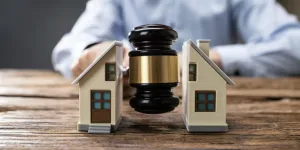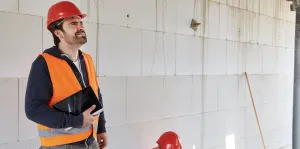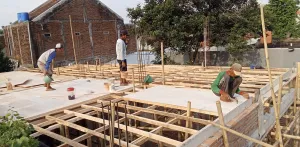A nuisance happens when someone’s actions make it hard for neighbors to enjoy their homes and property. This includes things like loud noise at odd hours, bad smells, poorly kept yards, or plants growing where they shouldn’t. These problems can affect one neighbor (private nuisance) or cause trouble for the whole neighborhood (public nuisance). To prove a nuisance claim, it helps to take pictures, get neighbors to speak up about the problem, and keep a record of when things happen. Knowing what makes something a true nuisance helps people fix these problems through the law or by working with their community.
Key Takeaways
- Excessive noise from music, parties, or barking dogs that consistently disrupts neighbors’ peace and enjoyment of their property.
- Noxious odors, smoke, or bright lights that unreasonably interfere with neighboring residents’ quality of life.
- Poor property maintenance causing unsafe conditions, pest infestations, or significantly decreasing neighboring property values.
- Encroaching vegetation, improper parking, or unauthorized construction that affects neighboring properties or public spaces.
- Activities that violate local ordinances and create substantial, continuous interference with neighbors’ use of their property.
Understanding Private vs. Public Nuisance Claims
To take legal action over neighborhood problems, you need to know if it’s a private or public nuisance.
A private nuisance bothers just one homeowner or a small group – like when your neighbor plays loud music or lets their tree grow into your yard.
A public nuisance causes trouble for everyone in the area, such as someone dumping trash illegally or running a business from home that brings too many cars to the street.
The courts handle these cases differently.
Public nuisance cases usually need the government to step in, while private nuisance cases stay between the people involved.
Common Types of Residential Disturbances
Residential disturbances are problems that make it hard for people to enjoy their homes. These often include loud music and parties, dogs that bark too much, and yards that aren’t taken care of, which can look bad or be unsafe.
Other common problems are bad smells, bright lights shining into homes, cars parked where they shouldn’t be, and plants growing where they don’t belong.
Other issues that bother neighbors include smoke from backyard fires, building work without proper permits, and water that flows into other people’s properties.
When these problems happen, neighbors often get into fights, and sometimes the city or courts need to step in to fix things.
Legal Standards for Proving Nuisance
To prove a nuisance claim where people live, homeowners must show clear proof of key things. They need to prove that something truly gets in the way of enjoying their property and causes real harm.
| What to Prove | What’s Needed |
| What Caused It | Clear tie to what the other person did |
| How Long | Problem keeps happening |
| How Bad | Big effect on everyday life |
Winning a nuisance case means showing solid proof, like papers, people who saw it happen, and expert findings. Courts look at whether a normal person would find it unreasonable, while also checking local rules and what’s normal for that neighborhood.
Local Ordinances and Zoning Regulations
Local ordinances and zoning regulations establish specific parameters for residential land use through legally binding municipal codes.
These regulations typically define permitted activities within designated zones while setting measurable limits on noise levels and other potential disturbances during specific time periods.
Municipal codes also mandate minimum property maintenance standards that property owners must meet to prevent conditions that could constitute a legal nuisance.
Permitted Land Use Zones
Land use zones in neighborhoods follow city rules that control what people can build and do in different areas. These rules set clear boundaries for how property can be used while keeping neighborhoods looking consistent and maintaining home values through standard guidelines.
- Areas for single-family homes allow one house per lot with rules about space between buildings and how tall they can be.
- Areas for multiple-family living allow apartment buildings, shared housing units, and larger housing projects.
- Combined living and business areas let some shops operate while keeping the main focus on homes.
These rules help make sure new building projects fit a clear pattern and stop different activities from causing problems in neighborhoods where people live.
Noise Level Restrictions
City rules control noise levels to help keep neighborhoods peaceful.
These rules set limits on how loud sounds can be during the day and night, with tougher rules at night between 10 PM and 7 AM. People who make too much noise can get tickets and have to pay money.
Places that make a lot of noise might need to add sound blockers, like walls or special padding, to keep the noise down.
City rules cover different kinds of noise from building work, music venues, machines, and everyday home activities.
These rules help make sure everyone in the neighborhood can live together without too much noise bothering them.
Property Maintenance Standards
Property owners must follow basic maintenance rules set by their local government to keep neighborhoods safe and looking good. These rules cover how properties should look, how well-built they are, and if they meet basic health rules. City workers check properties regularly and send warning letters when rules aren’t followed.
- Yard care rules tell owners how short to cut grass, remove weeds, and take care of trees.
- Building rules require fixes for damaged houses, fences, and other built items.
- Health and safety rules deal with getting rid of pests, handling trash, and fixing water flow.
When owners break these rules, they might get tickets, have to pay money, or go to court. Breaking rules can make nearby homes worth less money too.
Documenting and Reporting Nuisance Cases
The systematic documentation of nuisance cases requires maintaining detailed records of incidents, including dates, times, photographs, and witness statements.
Reporting procedures typically involve contacting municipal authorities through official channels, such as the local code enforcement office or police department’s non-emergency line.
Successful resolution of nuisance complaints often depends on thorough follow-up communication with relevant authorities and maintaining a clear paper trail of all interactions and developments.
Record Evidence and Details
Record keeping is vital when dealing with neighborhood problems and complaints. Good records help show clear proof of ongoing issues and how they happen over time.
Keep track of problems in an organized way to show they keep occurring and affect daily life.
- Take pictures or videos with clear dates and times shown.
- Keep a list of all problems in order, writing down what people saw and what the conditions were.
- Write down every time you try to talk to the person causing problems, including when you sent official notices and what they said back.
All these records build a strong case that can be used in court and show you took proper steps to fix the problem.
Contact Local Authorities Properly
If something keeps bothering you in your area, tell the right local offices about it. Use the proper ways to report problems so they get written down and fixed.
Call the right people – like the rule enforcers, regular police number, or city workers – based on what’s wrong.
When you talk to officials, give them all the facts, when things happened, and proof if you have it.
Send your complaints the way they ask for them – through their website, on paper forms, or by talking to their workers.
Keep track of everything you send them, like report numbers and messages, so you can check how they’re handling the problem.
Follow-Up on Filed Reports
Following up on filed complaints helps solve problems faster.
After filing your first report, keep good records of any changes and stick to reporting deadlines. Stay in touch with officials to make sure they keep working on your case.
- Write down every step you take – when you contacted someone, any case numbers, and who you talked to.
- Watch for deadline dates and take the next steps as local rules allow.
- List each problem event in order, with pictures, what others saw, and how it affected you.
This careful record-keeping shows you’re serious about fixing the problem and builds strong proof if you need to take legal action.
Remedies and Legal Solutions Available
When neighbors face problems in residential areas, they have several ways to seek help. They can use local mediation services, where a neutral person helps both sides talk and find solutions together.
If that doesn’t work, they can take their case to court to stop the problem or get money for any damage caused. They can also report issues to local officials who enforce housing rules.
Other ways to handle these problems include getting short-term court orders to stop bad behavior, using conflict resolution programs, or working with their homeowners group to enforce neighborhood rules.
City officials can also step in by holding hearings or ordering people to fix ongoing problems.
Prevention Strategies for Property Owners
Keeping your property in good shape can help you stay out of trouble and get along better with your neighbors. Good property care and working with your community helps create a peaceful neighborhood where everyone can live comfortably.
- Set up regular cleaning and fix-up tasks, like keeping noise down, dealing with trash properly, and taking care of your yard.
- Make clear rules for renters about how to behave, use shared areas, and handle problems.
- Join neighborhood groups and talk with neighbors to fix small issues before they turn into big problems.
Mediation and Alternative Dispute Resolution
When neighbors have problems with each other even after trying to prevent them, talking things out with a neutral helper can solve issues without going to court and save money.
Trained helpers guide both sides to talk openly and find solutions that work for everyone.
People can work out their differences through guided talks, local conflict programs, or meetings with a neutral person in charge.
These steps often help neighbors stay friendly while fixing issues about loud noise, where property lines run, or other bothersome problems.
When both sides reach an agreement, they write down what each person will do, when they’ll do it, and what happens if someone doesn’t follow the rules.
Frequently Asked Questions
Can a Nuisance Claim Affect My Home’s Resale Value?
A nuisance problem can seriously lower your home’s value by making it less attractive to buyers. When experts figure out how much a house is worth, they often take these problems into account and reduce the price accordingly.
How Long Does a Nuisance Condition Need to Exist Before Legal Action?
A nuisance problem doesn’t need to last a set time before you can take legal steps. Courts look at each case differently and weigh several key points: how bad the problem is, how often it happens, and how much it affects nearby property owners.
Are Temporary Construction Projects Considered Legal Nuisances?
Construction noise and temporary disruptions from allowed building work usually don’t count as legal nuisances if the work happens during set times and follows the local rules for neighborhoods.
Can Renters File Nuisance Claims Against Neighboring Property Owners?
Renters can take legal action against nearby property owners when their neighbors create problems that disrupt their daily life and peace at home. The law protects renters’ rights to enjoy their living space without serious disturbances from next door.
Do Previous Owners’ Nuisance Violations Transfer to New Property Owners?
New property owners must fix problems from past violations and nuisances that came with the property. While they take on this duty when buying, how quickly they need to make repairs and what exactly they need to do may depend on how long these issues have been going on.
Conclusion
Legal nuisance claims in residential areas can be complex, but our team at Ace California Law helps property owners understand their rights and options. When dealing with nuisance issues, you need clear proof and must follow local rules. Keeping good records of disturbances, checking city ordinances, and taking proper legal steps are key parts of the process. Courts look at both private nuisances (affecting individual properties) and public nuisances (impacting the wider community). To win a case, you must show that the problem seriously affects your property rights or the neighborhood’s well-being. Before going to court, many neighbors find success with mediation or other informal solutions that save time and money.







